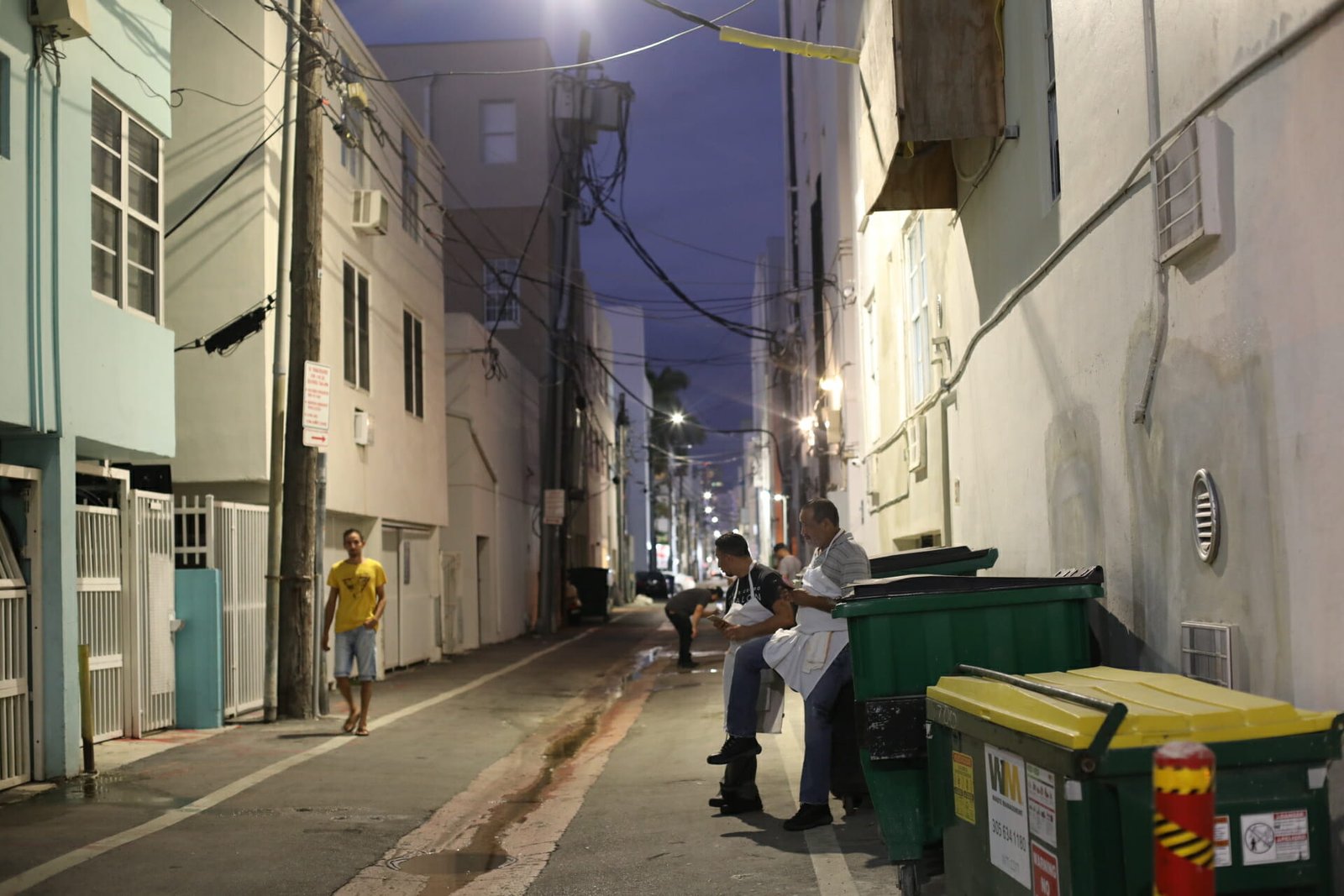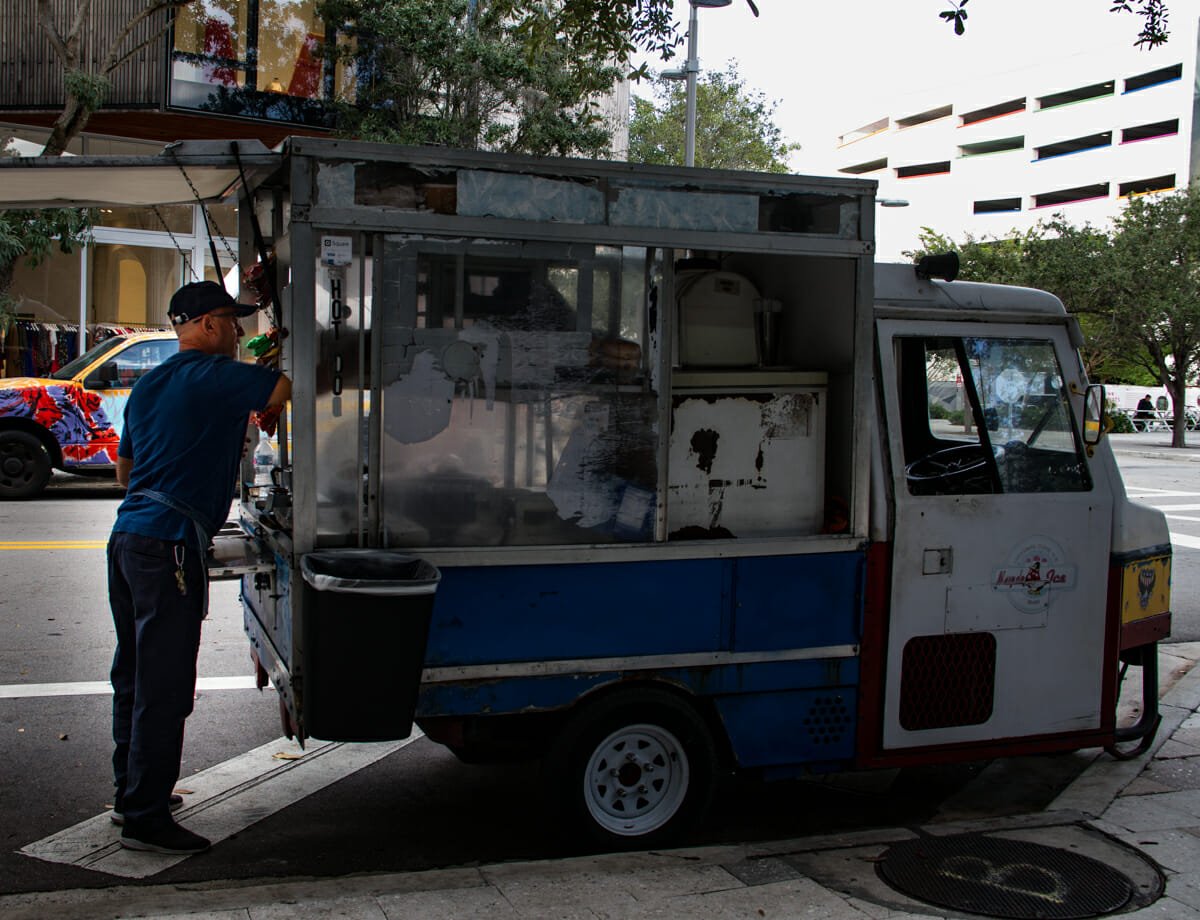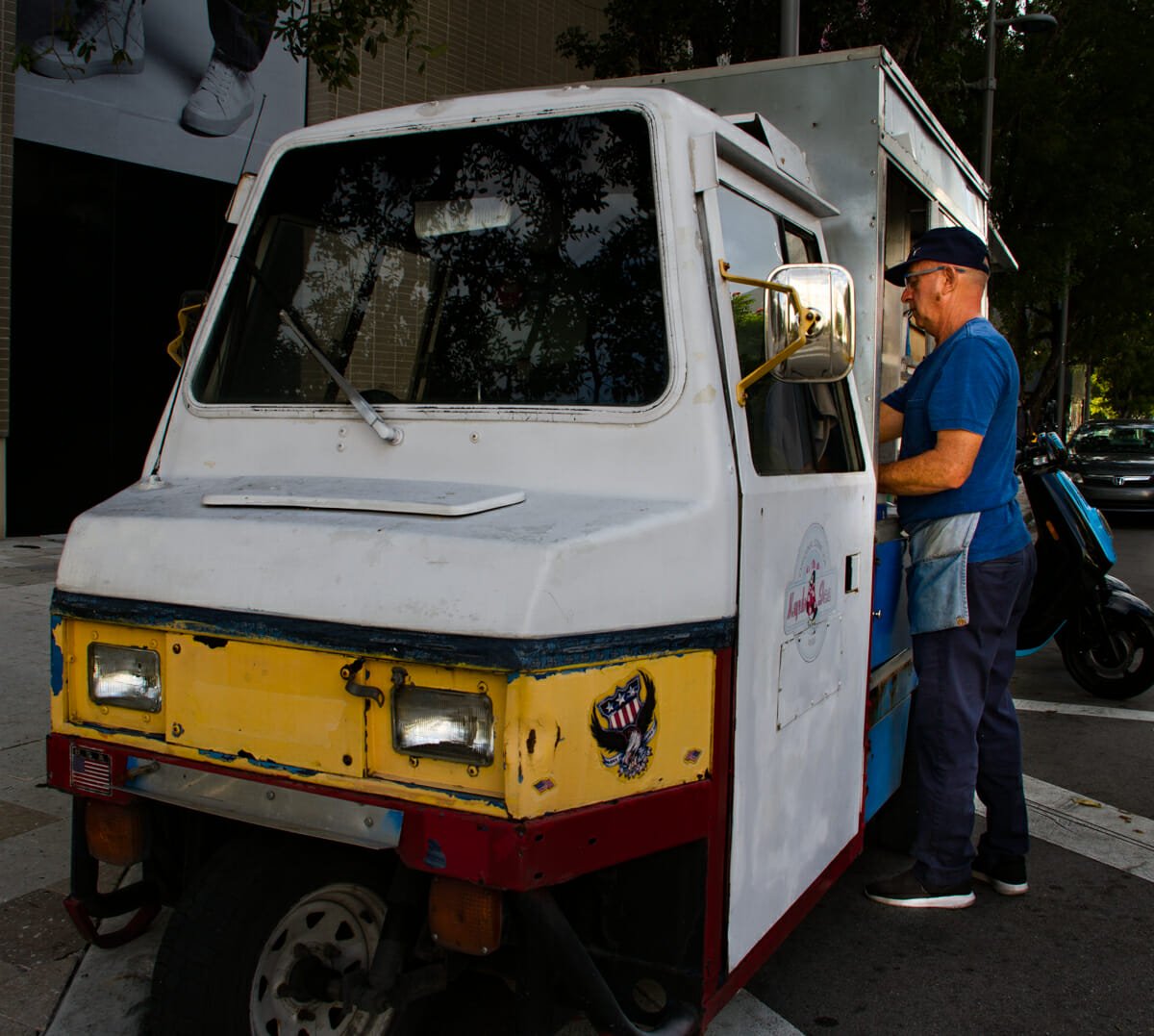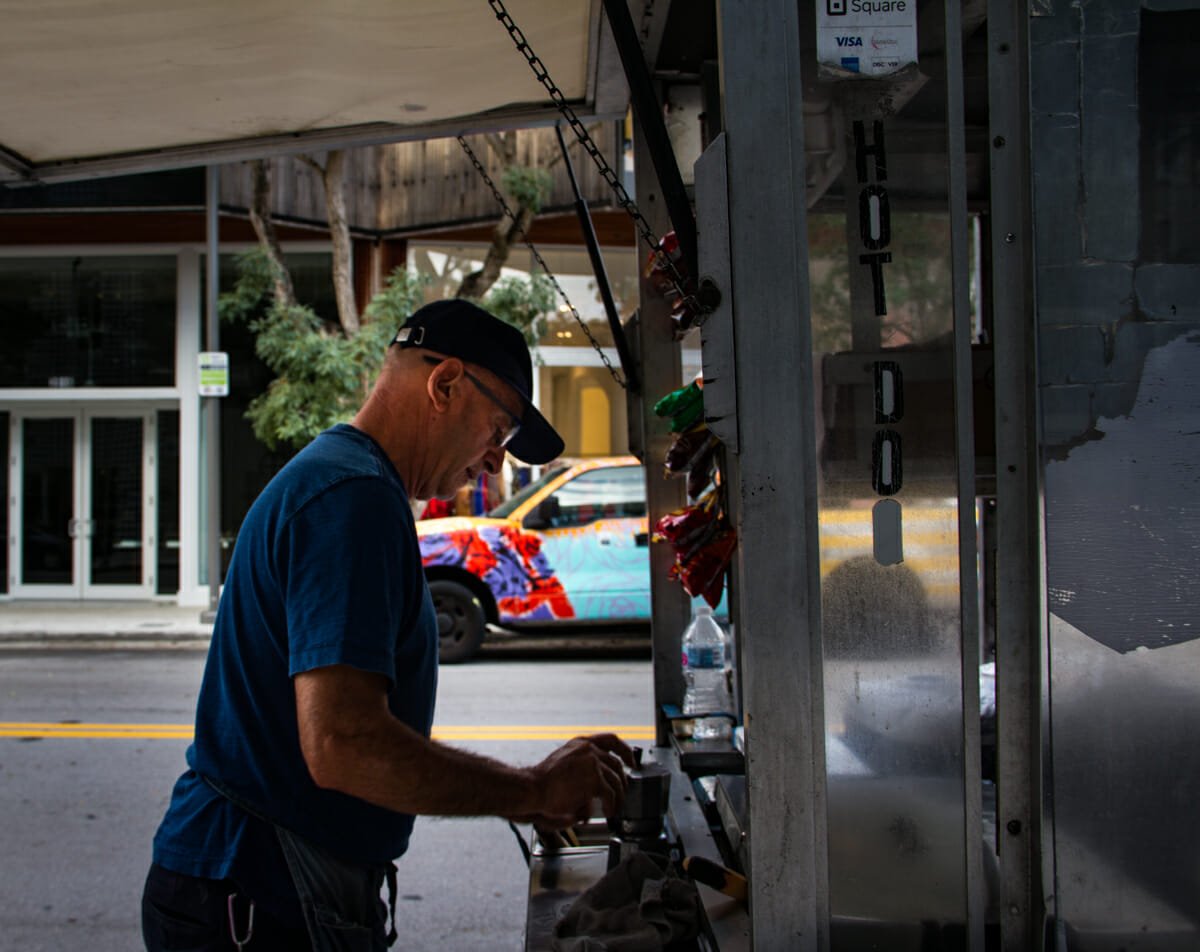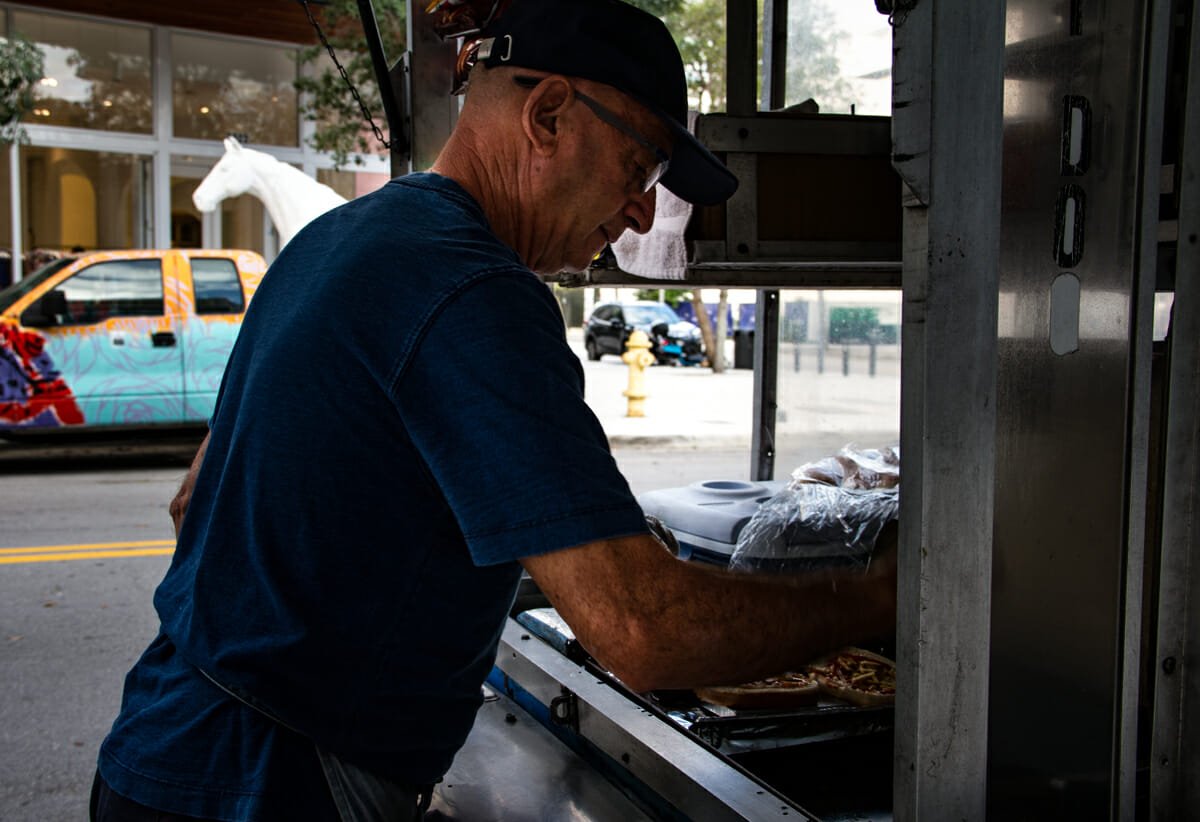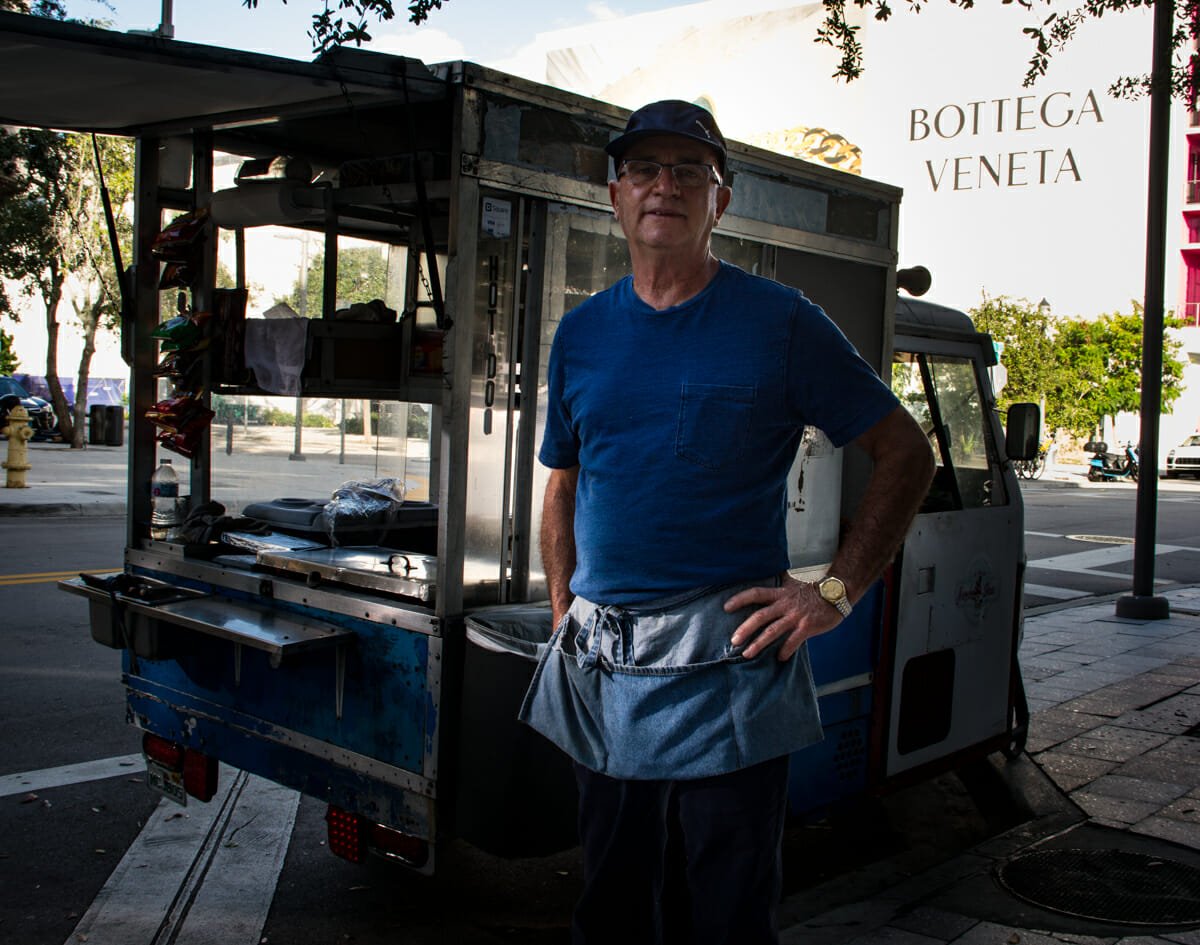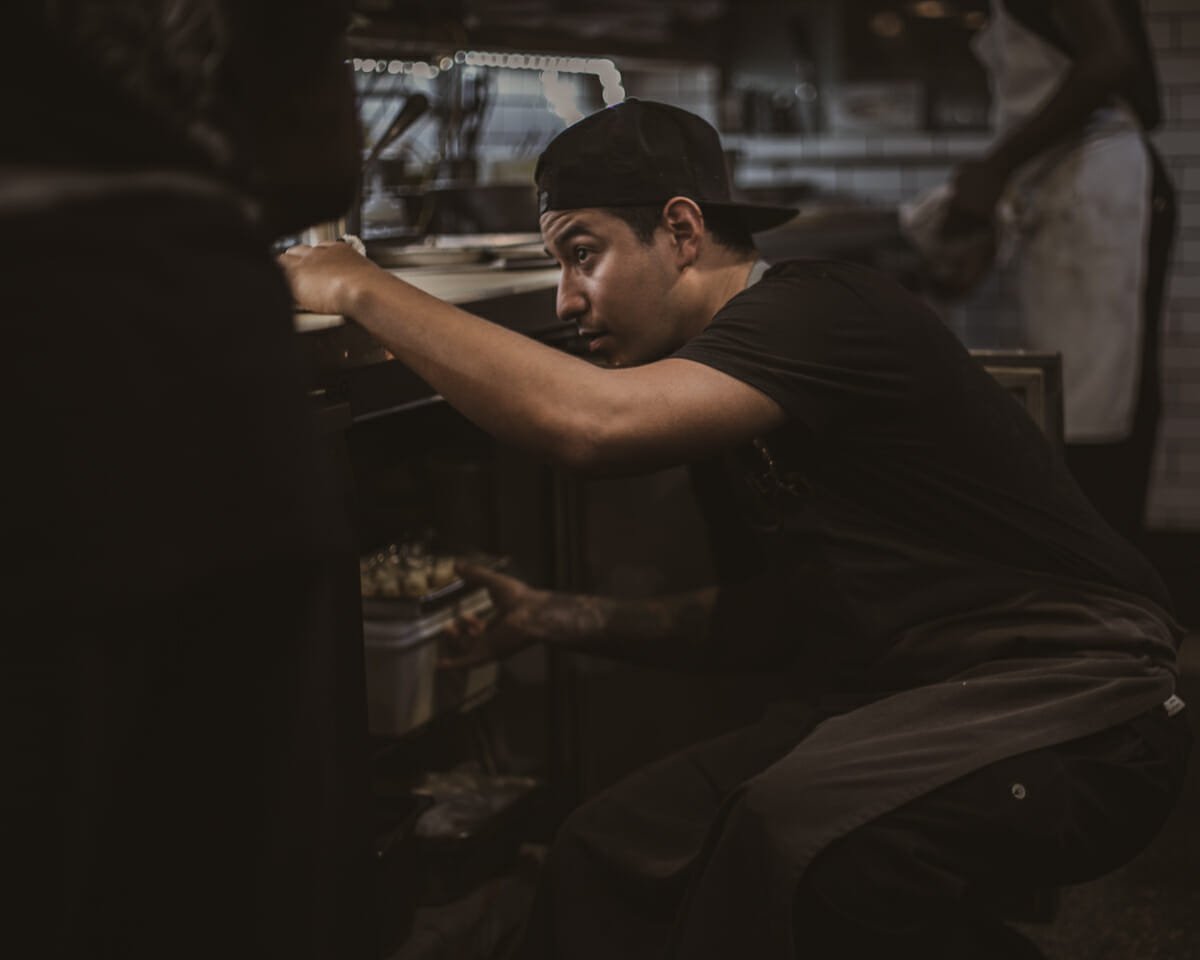Adaptation and Solidarity During Corona Times
A letter on Corona without limes. Takeaway food and Darwinism.
People will argue that this great pruning is being caused by Mother Nature clearing out the infection that humans have become. Heck, I’ve heard people (who believe humans were destined to rule the earth and play on a different ball game than animals entirely) suddenly start spewing words on social Darwinism and survival of the fittest because they refuse to isolate themselves to prevent everybody and their grandmas from potentially getting infected. Oh, the irony.
As much as the economic forces reflect that image of adaptation – that only the businesses who are most capable of adapting to market situations will be the ones who come out on top, while the rest go bankrupt and close their doors for good is true. Or, in sticking with the analogy of Darwinism – Die. We cannot forget that in times of greatest need, societies throughout time have been able to put down their rolls of toilet paper, or whatever their equivalents were – and come together in support of one another to ensure the survival of their people. (A nice way of saying people at some point dig their thumbs out of their own asshole and help one another.)
It would be naive for people to simply say that the restaurant industry will survive because people will always need food and landowners will always need people to rent their lots, then proceed to turn their backs away from the problem while ignoring the local farmer’s market on the way to [insert supermarket chain here] all while posting on Facebook about how infuriating it is that bats in Wuhan are somehow responsible for Carla not being able to have her margaritas at the beach because they canceled her flights planned for her Instagram stories.
The fact of the matter is, the restaurant industry as a whole is taking a blow like nothing it’s seen in recent memory. Thousands of restaurants are closing their doors for good across the globe, leaving an innumerable amount of chefs and waiting staff out a job with tons of produce left to rot (the number of layoffs is in the millions, already.) Cities and towns all over will find that many of the restaurants in their neighborhood will simply not open their doors again once the quarantine periods are over, and even amongst those that survive, over half of them will have laid off staff members to cope. It’s a dire situation, and everyone from your local butcher up to world-renowned cooks are worried for what the future holds for our beloved industry.
The shifting sands
If there is indeed any light to be found in these dark times, the most evident place for it to be found is in the solidarity that the restaurant industry has always had between its crosshairs – a solidarity that extends beyond borders and across oceans. Cooks are like sports teams, except we’re all one large group of psychos who love knives, heat and transforming raw ingredients into magical things. We take pride in what we do, and we love to cook for others. I do believe that it is in times of need like these, that the overwhelming desire to help one another as well as our communities boils to the surface. Restaurants all across the globe have created initiatives to provide food for their communities, with the goal of ensuring that as many people as possible who have been affected by Covid-19 are able find comfort in knowing that, for as long as time allows, at least, there will be warm food on their tables.
But what about the money, what about the mass layoffs taking place? Community work like this is all well and good, but that won’t ultimately pay salaries, and the reduction in team sizes still leaves many people jobless. As soon as governments across the globe instated rulings that forced restaurants to close their on-premises seating areas, it became evident that the only way for restaurants to survive was a switch to a takeaway food model. However, the solution for the survival of restaurants isn’t just about putting things in Tupperware and putting them in a plastic bag – the entire approach to the sale of food needs to be turned on its head and reworked. Chefs across the board need to rethink their approach to the service they provide.
Amidst the uncertainty of this all, the desire for fancy food goes out the window – not only are the amount of people willing to pay premium for food dwindling, but the increased stress on the daily lives of everyone creates an opportunity for menus that focus on home-style food; dishes that make people forget that people around them are getting the boot. We need to remember that there’s much more to food than just sustenance or pleasure; food provides comfort, and it doesn’t get more comforting than home food. And if anyone doubts this fact, Chef Grant Achatz has switched his world-renowned restaurant into a take-out joint selling meals for $35. It is also imperative for chefs to analyze their connections to not only their customers but also their suppliers and other players in the industry. Critical opportunities for partnerships and collaborations are present, as seen by restaurants who have shifted their spaces to turn into markets of local produce from their farmers. Chefs like JJ Johnson in the US as well as chefs across the pond over in Europe have found ways to keep their heads above the water and retain staff by shifting their business models and catering to the immense demands for food by hospitals flooded with patients and the staff in the front lines of the outbreak.
While the situation is dire, not all hope is lost. “Where there is a will, there is a way” – or so the saying goes. New avenues for income are surfacing as the world adapts to the Covid-19 outbreak, and they’re ripe for the taking. The industry is seeing world-wide solidarity within, and we’re not just going to stick this out as the large family of chefs and restauranteurs we’ve always been – we’ll kick it in the teeth and come out on top.
“In the long history of humankind (and animal kind, too) those who have learned to collaborate and improvise more effectively have prevailed.” – Charles Dawrin.
Consistency
If there is one common element between a single photo and a casual meal at home – it is that they are singular. There are no expectations for a comeback, no previous references to compare to and they are open to improvisation. As a single piece of art, it’s able to stand alone and defend its singularity.
When creating a full menu, art collection (or even a thematic Instagram Community), the goal is to deliver a consistent product. Each piece must join the connection; from the first to the last, without losing the audience or its goals.
When we first started – as with every new project – the learning curve was steep. Finding a proper look for our pictures and creating a place where we could have photos that tell a thousand words wasn’t easy.
We needed to take a step back and ask ourselves; what do you feel when you are in the kitchen, in the middle of the rush? I have to say that a lot of things are happening there, but we decided to pick drama – to illustrate the dark side of the kitchen.
I want to talk about our unique touch that makes sure each photo belongs to our grid, tells a story and is used to open a conversation about my medium; Photography. I invite you to pick up your camera, use it everywhere and talk about it.
To tell the right story to our audience we must first prepare the base. In editing, to enhance the drama we want, we use low key (Dark photos) and highlight our subject. I also want to give it a cinematographic touch by lowering the saturation.
With these three elements we form the look. Now for the composition. Whenever possible, I prefer to leave breathing room in front of my subject. This give the impression that there is something they are looking at. I am not very strict with the rule of thirds, but it usually helps me find a more balanced photo for the composition. Lastly, I crop my images to a 4:5 ratio. This adds some identity to the sequence and works great for Instagram Posting.
Finally, I go for the details. Since I have a dark and decolorized photo, I need to highlight my subject and pull them out from the background in order to help them stand out. For this, I usually add light to the face along with any other important element in my frame. We do not do any major photoshop editing, transformations or modifications to the original photo but use it for balancing the exposure, adjusting temperature and basic values. Every kitchen is different in regards to light, color, and space.
We shoot RAW using a Canon 5D MK IV with a 50mm f/1.4 and a Canon EOS R with a 24-105mm. All the post-processing is made using Adobe Lightroom with some recent experimenting in Capture One.
Jorge Nizarala - Design District Hot Dog Car
In between the high-end brands, flashy cars and extravagant food, there is someone there for the every day people who work to keep this place alive. Someone like Jorge. Check out his interview.
What’s your name? Where are you from? How long ago have you lived in Miami?
My name is Jorge Nizarala, I come from Uruguay, and I’ve been in Miami for 18 years. I love it here. Mainly the weather. It makes me never want to leave.
Why Miami?
It’s a long story. My sons left home first, they planning on going to Europe, but later they decided to go somewhere closer. Once they arrived and settled in Miami, they persuaded me and their mother to come as well.
When did you begin in the food business?
That story begins in Uruguay. I already worked in something similar to this, and I did for many years. Being here in Miami, I always searched for a way of doing something on my own. Finally, the opportunity came. A person I knew had this truck and wasn’t using it anymore. We negotiated, and well, here I am eight years on.
Where did you get this cart? Why hot dogs? Why this style?
Whe style began because of the car, and I already knew about the hot dog business. Back in my country I had a job doing the same thing; selling hot dogs, sausages, sodas, and things like that. The guy I got the car from had a business route, he gave it to me and I continued using it. I added some new products, within the space available, I slowly added more. Everything has worked out, I have work, and that’s important.
Did you add products based on Miami’s culture?
Of course! I don’t have space for a coffee machine, but people ask for ‘coladas’ all the time, so I purchased the aluminum espresso maker, and it worked out. I have people pass by saying ‘Oye preparame una colada’ (Hey make a me a colada), and now I can. I l had to learned how to prepare it. In Uruguay, we don’t drink coladas. It’s not that we don’t drink coffee, we just drink less amounts compared to Miami. This type of espresso maker does not exist back home, but you mold yourself to the city you live in.
Which were some of the challenges you had to overcome from starting your own business?
Ihe main challenge was to produce enough money to keep the business running, and then to profit from it. I had expenses and I had to earn a salary as well. At the beginning it was hard – it wasn’t easy to make just enough to pay the vendors. Nevertheless, we went step by step, adapting to each situation accordingly. We economized in every way possible, until we gained more sales.
Tell us about your menu. What’s your favorite product?
Not that it’s my favorite, but based on customer orders, the hot dogs sell very well. It’s a high-quality product. People love their flavor. It’s my battle horse, it produces the largest amount of revenue for my business. I also serve sausages, which are a different product. It too sells well, but not like the hot dogs. I always sell more hot dogs than sausages.
What’s your favorite food here in Miami, and your favorite place to eat?
We have a tradition in South America; meat. We are excessive carnivores. Although I have reduced my consumption, at my age there are less benefits, but I’ll always be attracted to a nice ‘Parrillada’ (barbeque). On the weekends I take my wife to a ‘Parrillada’ two to three times a month. That’s my favorite thing to eat. I don’t know much about names -I don’t really remember, but I often go to La Parrilla Argentina and another Brazilian restaurant here in North Miami. They sell amazing steaks, in Portuguese they call it “espeto corrido”, basically a spike with meat that they pass around your table, and cut it straight on to your plate. The meat they serve there is high quality and they have an amazing salad buffet. That’s the most common thing for us in South America – meat. We also make ‘Parrilladas’ at home, like when my kids come for the weekend, or when I go to their houses. It’s very typical between us.
What’s the craziest thing that has happened to you with your business?
The craziest thing had nothing to do with food, but with my car, was the time my brakes didn’t work. That was horrible. I left in the morning to go to work, as I usually do. At first when I had to use my brakes, I felt that the pedal would push back strongly, but the car still braked. I stopped at a red light, then I accelerated again towards the next light on eighth street. The light switched to red, and all the cars stopped. A Crown Victoria stopped in front of me – they look like police cars. When I pushed the brake pedal, it went loosely all the way down, and the car didn’t stop. I saw the car in front of me get bigger as I got closer, I felt like I was going to eat it. I wasn’t going fast, this is not a car meant for speed, but as long as it’s moving, you definitely feel the impact. I looked quickly and saw a narrow space in between the yellow street line and the Crown Victoria. My car is narrow as well. My thoughts were that it would be cheaper to smash the other car’s mirror than to hit it in the back. I drove the car into the space, and it fit perfectly. Once I got to the intersection, the light was still red and cars were passing. I drove straight through the red light, luckily, nothing happened and I was able to pass eighth street safely as my speed began to slow down. This is an automatic car; you don’t have the resource of a stick shift to control the car. I reached the next street, the car continued to slow down until it finally stopped completely. It was crazy. My heart was pounding out of my chest. When I stopped, I couldn’t believe what just had happened.
Any advice for anyone who wants to start their own mobile business?
Well, it doesn’t have to necessarily be for a mobile business. I’ll say that when you have an idea and initiative, you must fight for it, because that’s the only way you will change your perspective on life. If you are going to wait for the train to pass, chances are it won’t. So when you have an opportunity, you must take it. This is a business like any other. If you have an idea, throw yourself towards it, and follow it. Nothing you’ll ever do will feel like winning the lottery. There are no instant rewards. This is a fight. Many people tell me “oh, but you’re doing great!!” Yes, but I’ve been fighting for eight years. The first two years were hard – I had to go to poorer areas that were less safe, so that I could pay less rent to overcome what I was not making. You will go through this process in any business you start. You will have many difficulties, but you can’t give up. When I had my first car, I had mechanical problems – nothing serious, but enough to lose days of work. Imagine, you already not making enough and still you have to stop two- or three-days’ work due to mechanical problems. When you miss two days of work, you are not going to get paid. You have to think about everything, and know how to find balance, and push your business to success.
What separates good, from great? - José Tena
What makes a Chef great? Is the calibre of a great chef measured by the technical prowess they possess? Or, is it something else entirely?
“To be great you must work with the greats” is something all too often told to young people striving for a career in just about any industry in the world; and in kitchens around the world it is universally acknowledged that working with the world’s best is a near sure-fire way of making it into the big leagues. Presuming, of course, you can stomach the pressure and pace.
I believe that there is much more to that phrase than the simple passing on of technical skills at the avant-garde level to hopeful, knowledge-hungry new cooks, looking to progress above their mentors. The most crucial aspects can be taught by chefs at all levels of skill. Cooking, much like all arts and crafts professions, is a labour of love. However, let’s put aside the tale that dictates that if you “cook with love your food will automatically taste better,” for a moment and let’s dive into it a little deeper.
There are many things to love about cooking as a career. Some people strive to cook at the highest technical level possible; merging science into everyday cooking in their restaurants, distilling wet soil scents with chefs like Jordi Roca to develop mind-boggling desserts. Some are driven instead by the wild side of the industry and strive to work for people like Marco Pierre White (or well, used to back when he was at the helm of Harvey’s.) And some are driven by the thirst of exploration in finding new ingredients that are unknown to modern society. They migrate to Brazil to work with chefs like Alex Atala to discover indigenous Amazonian foods and explore the unknown.
But, what about the majority of cooks in the industry? The other 99% – are we to assume that unless they work with some of those world-renowned chefs, they are never going to make a name for themselves?
I would argue, then, that the greatest traits any chef can pass onto their cooks are not that of technical abilities, but instead, boil down to a couple of things.
One – the love for sharing knowledge with people; to not only strive to improve their own technique, but to share these talents and discoveries with the people around them in the hopes of enhancing their own abilities, while simultaneously learning from them. Take René Redzepi and David Zilber’s book “The Noma Guide to Fermentation” as an example, a book composed for the sole purpose of sharing their discoveries, successes and failures after years of R&D into the world of fermentation of Nordic cuisine. They aim to teach the masses – both home cooks and professionals alike – about the techniques they’ve developed so that people may build upon them in their own cuisines around the world, and further the pool of knowledge in this culinary field.
Two – the love for cooking as a way to enhance someone else’s life. To cook not only for oneself as a way to flex technical ability, but to instead learn to love the act of feeding someone at a fundamental level and understand the impact that food can have on people. To see the joy that one can bring to a person’s life through food is both extremely rewarding while also a very humbling experience. Food is as much a joy as it is a necessity, and while many of us may be serving expensive plates of food to well-off people, there are millions of people who live off food shelters around the world. One could argue that chefs have the greatest ability of all to bring happiness to these people’s lives on a daily basis.
To me, then, the greatest chefs are not those who strive purely for Michelin stars. But instead, they are chefs around the world who devote themselves to their craft at a fundamentally humanitarian level. And these attributes can be found in just about any corner of the world, not just the World 50 Best.
El Bori - Liliana Boneta
Where are you from? When did you arrive to Miami, and what’s the thing you most like about it?
I come from Puerto Rico, I arrived in Miami two years ago. I like it here, in a lot of ways it’s similar, but what I like the most is its cultural diversity. Back in Puerto Rico, the majority of people are locals, it isn’t as diverse as it is here. That’s what I truly like about Miami.
How did you get involved in the culinary world?
My love for cooking was nurtured by two people. My mother, who is a natural chef, the best in the world, – although most people probably say this about their mothers, – and my father, who showed me the profession. He was a frustrated chef, and for as long as I can remember, we would always watch chef shows on TV together. Both of us “zoned out” (“embobolado”) – as we would call it. They are what most influenced my decision in continuing this career path. In Puerto Rico I worked in the kitchen since I was 21 years old, I’m now 38 and have finally set up my own little corner.
When did you open your food truck? Why the name El Bori?
Well, we opened the food truck a year ago, in fact, it will be our anniversary soon. We named it ‘El Bori’ because that’s the nickname of every Boricua (Puerto Rican). The name is short, precise and easy to remember – that’s convenient for a business.
Why this location?
We’re here from Wednesday through Sunday. I really like this location; I live close by, which makes it convenient, and we park the truck on the same street. Actually, our original idea was to open in Wynwood – the largest population of Boricuas were living there in the 1960s. Today there is much more culture. We always visualized our business there, it went without concept – street style, and kind of hipster. Our first month we opened on 20th street, but we had to leave that spot. Driving by here I stopped to speak to the woman who owned the shop, the result was a perfect collaboration. Thank God we’ve been here now for almost a year, with no real issues, a lot of respect, and the people here now know us.
Have you ever worked in a kitchen before? What would you consider to be some of the differences between working in a kitchen and a food truck?
From the Earth to Heaven. First off, the space. As a cook my whole life, I’ve never worked in a food truck before. You have a lot of challenges simply due to limitations. For example, water. I’ve worked in small kitchens before, and as long as a chef organizes himself efficiently, the size of the space doesn’t matter. But here our biggest challenge was water. We have one tank of water, and it has to last us the entire night. When we started, we would run out of water and go crazy, but we overcame that challenge.
What do believe is the future of food trucks? Do you think they are just trending?
In my opinion, it’s definitely trending. I really think it’s cool, and I enjoy the simplicity. Let’s say my concept doesn’t work out, which I hope doesn’t happen, but the good thing of having a truck is that I can just wrap it up with another concept and turn it into another business. I have experience in a lot of other things, and owning a food truck allows you to reinvent your business. Same goes for a restaurant, but it’s far cheaper with a food truck.
Where did you learn to cook Puerto Rican food?
At home. Everything I make here is Puerto Rican street food. You can find all these dishes throughout the night on the streets of Puerto Rico. There’s a lot of trucks that park up, and people come to hang out. Every night they come out to find a ‘Tripleta’ – one of our specialties here at El Bori.. We also have many authentic dishes, and we modify them by guest request. They ask and we add. We make a lot of plates you would eat at a Puerto Rican home. What I prepare is what my mom and grandmother use to prepare for me, combined with the things I saw on the streets.
Tell me about the “Tripleta”. What does it have?
The base of a great Tripleta – besides the seasoning on the meat, which has to be perfect, – is the bread. That the difference between my Tripleta and the others you find in Miami. It’s a Puerto Rican style of bread called ‘Pan Sobao’ – it’s soft and sweet. The guy who sells it to me, only sells it to me, and you can’t find it in many places. That was one of my biggest challenges before starting this business, if I couldn’t find a good bread, then I wouldn’t pursue it. You have to be loyal to quality. In Puerto Rico, there’s a bakery on every corner where you can find ‘Pan Sobao’, but not here in Miami. The closest you can find here is at the supermarket, but the texture isn’t the same. As a chef, you always want the best and you have to keep looking until you find it. I found mine. Basically, a ‘Tripleta’ is a sandwich made with ‘Pan Sobao’. It’s called a ‘Tripleta’ because it has a mix of three meats. My recipe consists of ham, chicken and beef with “pink sauce”, cheese, and chips. A lot of people like my spot because they feel at home, you see them come with their entire families. This is the closest thing you can find to a “Chinchorro” – sort of like a sports bar where you can dress casual, relax, eat, and drink. You’re chilling, talking and listening to music. This is pretty much how we spend our time in Puerto Rico. Everything is “Chinchorro”, people like to “Chinchorrear” – that’s the proper word for it.
Where do you eat, and what is your favorite food? Which is your favorite restaurant in Miami?
To tell you the truth I’m open to variety. I have a lot of different places I enjoy. Nearby, there’s a restaurant called ‘El Bajareque’, they serve the Latin food I enjoy. It’s Puerto Rican food. It’s accessible, quick, large portions and great service. I also love Peruvian cuisine like ‘Sabor a Peru’ and ‘Locura Marina’. I like ‘Barceloneta’, a Spanish restaurant – I was told by a client that one of the chefs there is Puerto Rican. Like I said before, I’ve only been here for two years so I haven’t gotten a chance to go around much. I always prefer small spots over fancy places, it’s just what I like.
How was your experience during Hurricane Maria?
I arrived in Miami two months before Hurricane Maria hit Puerto Rico. My husband had gotten here two years prior so we were safe. But all of my family was still in Puerto Rico. It was horrible, I spent two weeks crying in brutal stress. My mother and my children lived in a town called ‘Toa Baja’. Houses are made of concrete there so I believed they were safe, that nothing was going to happen. But it flooded, and I was cut off. There was no communication. I didn’t know if my mother was alive or if my kids were okay. I finally was able to speak to them two weeks later. My sister had to drive across the main highway looking for cell signal. Everyone was doing the same. That’s when she told me that everyone was alright. It was a horrible experience.
Was it Puerto Rico’s economy that made you move to Miami?
The economy in Puerto Rico has always been an issue, although my husband and I had good jobs. But he is a risk taker and a visionary. In a relationship, there is always someone crazy and someone sane, I’m the sane one and he’s the crazy one, even if it doesn’t look like it because I talk more. At that moment, he was working for a communications company, and he loved Miami, therefore, he requested a transfer, and he got it, here on Lincoln Road. He arrived at Miami two years before me, he settled in, and later I arrived. He noticed there was a necessity for a business like the one we now have, of Puerto Rican street food, there wasn’t any, and he would go crazy because he loves this food. He wanted to create this business idea, and my brother in law was a bartender for many years in Puerto Rico, so it was a perfect fit. My husband was the numbers guy, my brother in law was customer service, and I cooked, but now, they all learned to cook.
What is the craziest thing that has happened to you in a kitchen?
I went through something pretty crazy with a chef friend of mine. His name is Eduardo Coret. He used to be my mentor as well. Together we had the opportunity to be the personal chefs for Keanu Reeves when he was shooting a movie in Puerto Rico for 3 months. It was crazy tiring, but it was an enriching experience. At that point, my English was terrible, I could understand, but couldn’t speak. I think many Latinos go through this transition. I’m much more secure now. My friend, the chef, basically through me into the lion’s pit because he was shy, and as you can see, I’m not. He sent me out for the interview without telling me it would be with Keanu- that was wild. The proposal we gave him was all about Puerto Rican food. When you’re in Puerto Rico, I will serve you traditional food, I’m not going to serve you pasta or prepare gnocchi. Back then I was working for a baker and I brought Reeves some of the different types of breads I was baking. I also brought him a tomato jam and guava butter, – basically the best things that came to my mind. Even my mom cooked for him, he never knew it though. She would make these amazing sauces and I would add them to my dishes.
That day of the presentation was the most nervous day of my life. I was literally shaking, it was horrible, but in the end everything came out well. I presented him the dishes, and anything I couldn’t explain, his assistant translated, but the food spoke for itself. Everything was delicious, authentic Puerto Rican cuisine, – it was exactly what he was looking for. Food is a universal language.
¿De dónde eres? ¿Cuándo llegaste a Miami? ¿Y qué tal te parece Miami, que es lo que más te gusta de Miami?
Soy de Puerto Rico, llegue hace dos años a Miami. Me gusta Miami, es bien parecida a Puerto Rico, y lo que más me gusta es la mezcla de culturas. En Puerto Rico la mayoría de gente son locales, no tienen esa diversidad que hay aquí, y eso es lo que más me gusta.
¿Cómo empezaste en el mundo de la culinaria?
El amor a la cocina me lo creo dos personas. Mi madre, que es una cocinera innata, la mejor cocinera del mundo, aunque todo el mundo diga siempre lo mismo de su propia mama. Y el amor como tal a la profesión, fue gracias a mi padre, que era un chef frustrado, y desde que tengo uso de la razón, siempre veíamos esos programas de chefs juntos, él y yo ahí, “embobolado” como uno dice. Ellos fueron las dos personas que más influenciaron mi decisión de continuar esta carrera. Desde Puerto Rico vengo trabajando en la cocina, desde mis 21 años, ahora tengo 38, y ahora fue que pude montar mi rinconcito.
¿Hace cuanto abriste el food truck? ¿Porque el nombre El Bori?
Pues mira, el food truck lo abrimos hace un año, ya ahora cumplimos el aniversario, por cierto. El nombre El Bori es porque es el nickname de todo Boricua. Es un nombre corto, preciso y fácil de recordar, para un negocio es conveniente.
¿Porque esta locación?
Estamos fijos aquí de Miércoles a Domingo. Esta locación me ha parecido súper bien, yo vivo cerca de acá, entonces es muy conveniente, y guardamos el truck en la misma calle. Realmente la idea principal era abrir en Wynwood, ahí existía la mayor población de Boricuas en Miami a principios de los 60’s, hoy en día hay más cultura. Pero siempre vimos nuestro negocio ahí, porque el concepto de nosotros es así, callejero, medio hípster. De hecho, el primer mes estuvimos en la calle 20 pero nos tuvimos que mover, y pasando por aquí, paré a hablar con la señora, y resulta pues que fue una combinación perfecta. Entonces, gracias a Dios llevamos aquí casi un año, sin ningún problema, con mucho respeto, la gente ya nos conoce.
¿Haz trabajado en una cocina antes? ¿Cuales consideras que sean las diferencias entre trabajar en una cocina y un food truck?
Del cielo a la tierra. Primero, el espacio, como cocinera de toda la vida nunca había trabajado en un food truck. Tienes muchos retos porque tienes muchas limitaciones, por ejemplo, el agua. Yo he trabajado en cocinas pequeñas, y mientras un cocinero se organice bien, no importa el tamaño, pero aquí el reto mayor era el agua. Nosotros tenemos un tanque de agua, y me tiene que rendir para toda la noche, al principio se me acababa y me volvía loca, pero ya prueba superada.
¿Cual crees que sea el futuro de los food trucks? ¿Crees que solo están trendy en el momento?
Yo opino que sí, definitivamente es trending. Y realmente me parece muy cool, me parece muy versátil. Lo bueno de tener un food truck es que, suponiendo que no me va bien, que esperemos en Dios que no sea así, yo le hago wrapping a mi truck y lo convierto en otra cosa. Yo tengo experiencia en muchas otras cosas, y teniendo tu propio food truck te puedes reinventar, en un local también, pero con el truck te sale más económico.
Where did you learn to cook Puerto Rican food?
En mi casa. Todo lo que yo hago es comida callejera puertorriqueña, eso es comida que puedes encontrar en las calles de Puerto Rico de noche. Hay muchas guagüitas, y la gente sale a janguear, y todas las noches siempre buscan una Tripleta, que es nuestra especialidad aquí en El Bori. Tenemos muchas más cosas típicas en el menú, y también vamos modificando, empiezas a conocer más a tus clientes, y la gente pide y nosotros añadimos. Hacemos cosas que tu comes en casa, lo que yo hago son platos que me hacía mi mamá, mi abuelita y cosas que yo también veía en las calles.
Vendeme la “Tripleta”. ¿Que trae?
a. La base de una buena Tripleta, aparte de los condimentos de la carne que tiene que estar bien sazonada, es el pan. Esa es una de las grandes diferencias de mi Tripleta a cualquier otra en Miami. El pan es un tipo de pan puertorriqueño, se llama Pan Sobao, es un pan dulce y suave. La persona que me lo vende, me lo vende a mi nada más, y no lo venden en muchas partes. Ese fue el mayor reto para montar esto, si yo no tenía un buen pan, yo no iba a hacerlo, uno tiene que ser fiel a la calidad. En Puerto Rico hay una panadería en cada esquina, y lo venden en cada esquina, aquí en Miami no. Lo más cercano es un súper mercado, pero la textura no es igual, y tú sabes, como cocinero uno quiere lo mejor, y uno sigue buscando, hasta que lo conseguí. Básicamente, la Tripleta es un sándwich con Pan Sobao, y se llama Tripleta porque tiene la mezcla de tres carnes. Mi receta es jamón, pollo y carnes de res, tiene Mayo-Ketchup, que es la salsa rosada, que yo mismo la hago, y también tiene queso y papitas. A mucha gente le gusta mi espacio porque se sienten en casa, entonces tú ves que vienen en familia. Es lo más parecido a un “chinchorro”, que así nosotros le llamamos al sports bar, uno puede vestirse casual, relax, comes y bebes, y esta chillin’, hablando y escuchando música. Así más o menos es como se pasa el tiempo en Puerto Rico, todo es “chinchorro, a la gente le gusta “chinchorrear”, esa es la palabra propia para esto.
¿Tu dónde comes? ¿Cuál es tu sitio favorito para ir a comer en Miami? ¿Que comida es la que más te gusta?
En verdad soy bien variada, tengo varios lugares favoritos que me gustan. Aquí mismo hay una cafetería que se llama El Bajareque, y es lo más cercano a la comida criolla que a mí me gusta. Es de comida puertorriqueña, es accesible, es rápido, buenas porciones, y el servicio es muy bueno. También me fascina la comida peruana, me gusta Sabor a Perú y Locura Marina. Me gusta Barceloneta, que es español, y de hecho la chef es puertorriqueña, lo supe por unos clientes míos. Como te digo, llevo solo dos años aquí, y realmente aun no conozco tanto. Prefiero lugares pequeños que las cosas más fancy, eso es lo que a mí me gusta.
¿Cómo fue tu experiencia durante el huracán María?
Bueno, yo llegué dos meses antes del Huracán Maria a Miami, y mi esposo dos años antes, entonces nos salvamos de esa. Pero toda mi familia estaba allá, eso fue horrible, fueron dos semanas llorando, con un estrés brutal. Donde mi mamá y mis hijos viven es un pueblo que se llama Toa Baja, y allá las casas son de cemento, entonces yo dije olvídate, no va pasar nada, pero se inundó, y yo me quería morir, no había comunicación, yo no sabía si mi mama estaba viva, o si mis hijos estaban bien. Yo pude tener comunicación con ellos después de dos semanas, porque mi hermana manejo a la autopista buscando señal, se estaciono en el medio de la autopista, todo el mundo estaba en esas, y ahí ella me pudo decir que todo estaba bien, pero fue horrible.
¿Algo de la economía en Puerto Rico fue lo que te hizo venir a Miami?
La economía en Puerto Rico siempre ha sido un problema, aunque yo tenía un buen trabajo y mi esposo también. Pero él es atrevido y es un visionario, siempre en una relación hay un loco y alguien cuerdo, yo soy la cuerda y él es el loco, aunque no parezca porque yo hablo más que él. El trabajaba en ese momento en una compañía de celulares, y él amaba Miami, así que pidió un transfer, y se lo dieron, aquí en Lincoln Road. Entonces el se vino dos años antes que yo, se estableció y después yo llegué. Pero cuando el vino, el vio que había una necesidad innata de poner un negocio como el que tenemos, de comida callejera puertorriqueña, porque no encontraba nada, y se volvía loco porque le encanta. Luego él dijo que íbamos a montarlo, y mi cuñado fue bartender mucho tiempo en Puerto Rico, o sea se juntó el hambre con la necesidad, mi esposo es el de los números, mi cuñado servicio al cliente y yo cocino, pero ahora ya todos aprendieron a cocinar.
¿Que ha sido lo más loco que te ha pasado en una cocina?
Bueno, yo he pasado algo bien brutal. Junto con un amigo mío chef en Puerto Rico que se llama Eduardo Coret, fue uno de mis mentores también, tuvimos la oportunidad de ser el chef personal de Keanu Reeves. Esto fue cuando Keanu Reeves hizo una película en Puerto Rico por tres meses. Fue una locura, fue agotador, pero fue una experiencia enriquecedora. En ese momento mi inglés era fatal, o sea yo entendía, pero hablarlo no, creo que todos los latinos pasamos por esa transición. Ya no, ya yo me defiendo y digo disparate, pero en ese momento fue bien crazy, y más porque él fue el me entrevistó. Entonces mi amigo, que era el chef, básicamente me tiro a los leones, porque él es bien tímido, y como ven, yo no, entonces el me mando, pero no me dijo el pequeño detalle de que Keanu me iba a entrevistar, y eso fue bien loco. Entonces la presentación de comida que le llevamos fue de comida puertorriqueña, si tu estas en Puerto Rico, pues entonces tienes que comer comida de aquí, no te voy a servir pasta, ni preparar gnocchi. En ese entonces yo trabajaba con un panadero, entonces yo le lleve de la gama de los panes que yo hacía, le lleve mermelada de tomate, mantequilla de guayaba, bueno, todo lo mejor que yo tenía en mente, hasta mi mama le cocino, y él nunca lo supo, porque mi mama hacia una salsa bien buena, y yo la incluía en uno de mis platos. Y le hice la presentación, creo que ha sido el día que más nerviosa he estado en mi vida, yo estaba realmente temblando, horrible, pero todo salió bien. Le presenté todos los platos como pude, y la asistente de él le traducía todo lo que yo no podía decir, y al final la comida hablo por mí. Todo estaba exquisito, todo era comida típica puertorriqueña, era lo que él estaba buscando. La comida es un lenguaje universal.
Kitchen Confidential – Jose Tena
Like so many cooks across the world, Bourdain’s kitchen confidential is a book I keep close to my heart, in the kind of way people hold the Bible dear.
Sitting on this two-hour train journey across Germany after a six-month stint in Dubai’s kitchens, I find myself listening to the Audible version of the book yet again – also narrated by the late man himself.
And I wonder; what is it about this book that hits home for so many of us?
In an industry as varied and vast as ours, why is it that this book crosses borders, oceans, ethnic and cultural differences, and even the vast differences in the lifestyles of cooks (I’m looking at you, part-timer private chefs) around the world, and manages to find a place in all of our hearts and connect us, so effortlessly?
For some, it’s the allure to that rock-star lifestyle that gastronomy’s Golden Age saw, and which, to an extent, still carries on to this day (albeit with more health and safety regulations) – the appeal of a job where you could tell your co-worker to eat a dick, without being called by HR the following day. Where rocking up with a black eye and smelling of whiskey was acceptable as long as you got the job done. A place where all types of quirks and looks find a home, united by a love for ‘the life’.
And for some, it’s the appeal of the camaraderie that can only develop in environments like those found in kitchens. Where people spend the vast majority of their days together in confined spaces and in high-pressure environments, resulting in situations where you are suddenly more in sync with one of your own depraved cooks, than you are with your ‘civilian’ partners.
I once heard a cook saying that, you don’t join our industry because you love to cook – any monkey can cook in the comfort of their own home. You join our industry because you love the lifestyle, – the long nights, the perpetual sleep deprivation and the role of being a full-time pervert that comes with the job description.
So I ask you to share with us, not only what initially drove you to become a cook, but what keeps you falling in-love with our industry over and over?
“Being a Chef isn’t a job. It’s a lifestyle.”- Unknown
Danny
"An ex-girlfriend of mine got me into this industry. Her mother was the type that wanted her daughter to be with someone with a diploma, and with vision - so I decided to study culinary. In the end things didn't work out, and she decided to leave Miami, but I had found my calling. I'm grateful to the people that pushed me to be where I am today. We may not always talk, but we're still close friends."
Jose
Cooking was always a passionate hobby for me. I was a mechanical engineer back in Venezuela, but I enrolled in several pastry courses throughout the years. You know, it’s always a good idea to have the ability to switch your profession - a back up. You never know what can happen, what is out of your control. My country fell apart, we had to leave everything and resettle where I didn’t speak the language and couldn’t practice my trade. I started in restaurant kitchens from the bottom, and I’m hoping with time and hard work, there will be growth.
Jeffrey
I was in a mariachi band in Bogota. One day we had the opportunity to fly to Miami for a gig. When I was just about to head home, I decided to stay. The music wasn’t paying enough back in Colombia, staying here would enable me to find better work. The only opportunity that opened up was in kitchens. It’s been an amazing transformation. Food is an expression of art, so I don’t feel like I’m far off from what I originally wanted to do. I’ll still sing for my coworkers though. This is much more than a job - it quickly became my passion.


